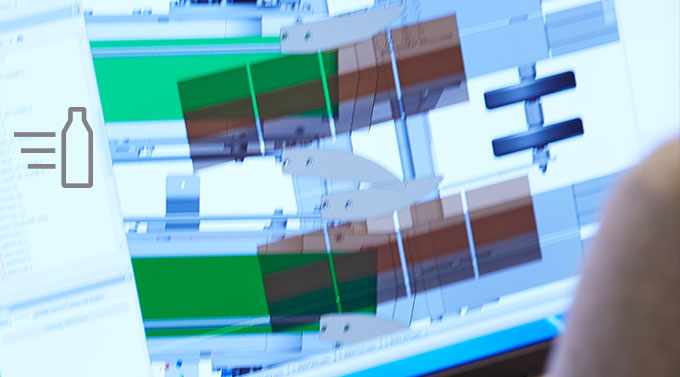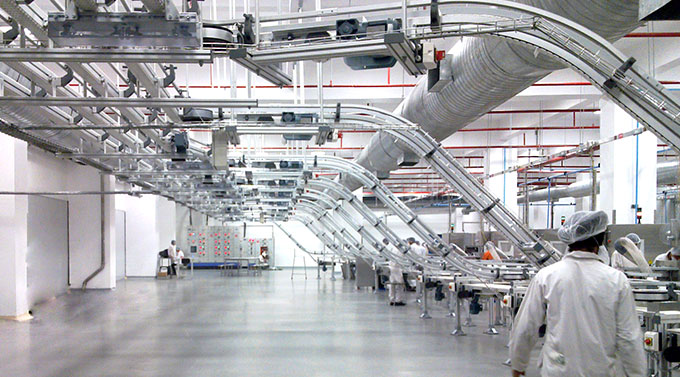
FlexLink’s main objective is to enable an efficient production flow, using as few components as possible. To achieve that, several methods are being used, where one of them is to apply specific Lean principles in their automated production flow solutions. In this blog article, we will describe a few Lean principles suitable in the production and packaging industry, and what impact the principles could have on the end result.
Lean – create more value with fewer resources
Lean is a management philosophy in how to handle resources. The purpose of Lean is to identify and eliminate all factors in a production process that don’t create value for the end customer. Simply put, it is about creating more value for less work. Lean contributes to customizing and improving operational efficiency in an organization, with the goal to reduce lead-time. The principles of Lean date back to the beginning of the 1900s where they started out as an inspiration to a production system adapted for mass production. Since then, the philosophy has had a rapid development and now covers a holistic approach on how an operation can be optimized from top to bottom.
Lean principles suitable for the production and packaging industry
Conveyors in automated production flow solutions are not only components, but also proper applications that require appropriate methodology. Lean is very well suited and adaptable to the conveyor industry, where the most relevant Lean principles are:
- Standardization, which is the practice of defining, communicating, following and improving standards. The goal with standardization is to achieve a foundation where processes are predictable. Unit loads and handling methods that are not properly standardized can lead to malfunctions, which must be avoided.
- The CONWIP system (Constant Work In Progress) means that the start of each product assembly process is triggered by the completion of another, at the end of production line. In that way, CONWIP concerns the entire system. Since conveyor systems are sensible against overloading, the number of unit loads must be limited. The CONWIP method can be applied to optimise the load on the conveyors between your workstations.
- One-piece flow is very well suited for a conveyor supported production. The principle means that if an operation of a product is completed, that product moves immediately to the next station, instead of processing an entire batch or lot at each operation before moving it to the next operation. One-piece flow is space efficient, flexible and effective, and the solution decreases both lead-time and waiting time.
- Poka-Yoke is a device that prevents the occurrence of errors, or at least reduces their probability. The goal with the principle is to eliminate human mistakes, prevent defects, minimize the cost of control processes as well as create an error-free environment. This relates to, for example, unevenly placed unit loads, which may cause mechanical blocking in the system.
- Visual management is a technique where information is communicated by using visual signals instead of texts or other written instructions. The tools provide information and support the production processes, and thereby improve the operations. This enables an effective design of the working environment.
FlexLink applies Lean principles to increase customer value
 FlexLink implements Lean principles in their automated production flow solutions with the main object to better understand customer needs and fulfill their requirements. Conveyors are traditionally regarded as inflexible connections. By using new modular solutions, a flexible conveyor system can be easily implemented and adapted to customer demands. One of the cornerstones within Lean management is to have consistency, in every step of the way. Therefore, it is important not only to focus on the results but the whole process. This is something that goes hand in hand with FlexLink’s way of working.
FlexLink implements Lean principles in their automated production flow solutions with the main object to better understand customer needs and fulfill their requirements. Conveyors are traditionally regarded as inflexible connections. By using new modular solutions, a flexible conveyor system can be easily implemented and adapted to customer demands. One of the cornerstones within Lean management is to have consistency, in every step of the way. Therefore, it is important not only to focus on the results but the whole process. This is something that goes hand in hand with FlexLink’s way of working.
Applying Lean principles in the early concept phase, in addition to the traditional technical aspects, will benefit FlexLink’s customers a great deal. By using Lean principles, FlexLink aims to increase efficiency in automated production flows and thereby increase customer value. The goal for FlexLink is to create an efficient production flow using as few components as possible.
Do you have any experiences in using Lean principles in the production and packaging industry? Feel free to comment on the article on social media, we are interested in hearing your thoughts! Don’t forget to visit our website to find out more about FlexLink.
Contributors
Gábor Bohács and Balázs Sztrapkovics
Dr. Gábor Bohács is Head of Department at Budapest University of Technology and Economics, specializing in Lean Management. Balázs Sztrapkovics is an engineer, also specializing in Lean Management. Balázs Sztrapkovics and Dr. Gábor Bohács has done a successful collaboration with FlexLink, assisting them in the implementation of Lean in their automated production flow solutions.




Great Article Klas.
Thanks! We’re also grateful for the valuable co-operation with our Hungarian co-writers when writing this article.
/Klas